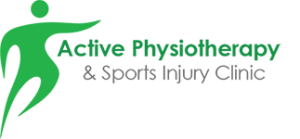Patient Education

Back and Neck Education
It is very important for the patient to understand how their back and neck work. Usually back and neck pain, are the result of an accumulation of months or even years of:
• Poor posture
• Using faulty Body Mechanics
• Stressful living and working habits
• Poor mattresses, pillows and poor sleeping habits
• Loss of flexibility
• Decline of physical fitness.
The key point to make is each of these common causes is under your control. The aim is to educate the patient regarding the anatomy of their spine, how their back works, ergonomics, how stress may be contributing to their symptoms, how to use their spine and what it will take to regain strength, vitality, and a more pain-free status.
Gait re-training
This involves assisting a patient in walking. Proper training helps the patient gain independence and minimizes the risk of falling causing re-injury. Assistive devices such as gait belts, canes, walkers or crutches are often used. Developing other skills such as static and dynamic balance in standing and walking are very important. Ensuring that the patient can effectively ambulate (walk) over obstacles such as ramps, curbs and on uneven terrain is also a goal. Gait Re-training is helpful in correcting abnormal walking patterns, as a result of strokes, Parkinson’s disease, brain disorders, foot, ankle, knee, and hip problems, as well as post surgical problems. If a person can walk easier and safer, they will usually be able to do more activities, independently. This will make the person happier and healthier, and therefore increase their quality of life. An evaluation of your gait and design of a specific program will facilitate a more efficient walking pattern.
Ergonomics and Body Mechanics
Body Mechanics refers to how one uses their body. Sitting, standing, bending, lifting, working etc. with poor postural positions are instances of using poor body mechanics. The term “Ergonomics” is derived from two Greek words: “ergon”, meaning work and “nomoi”, meaning natural laws. Ergonomists study human capabilities in relationship to work demands. Ergonomics generally refers to creating a healthier work, home or driving environment to decrease stress on the body. When patients come in with pain, part of the physical therapist’s job is to assess the patient’s home and work environment to see if there is anything they are doing at home or work that could be contributing to their pain.
At home we focus on sleeping position and type of pillow and mattress used. We also look at how they sit at home and in the car. Lifting objects from varying heights is also very important to look at.
At work we look at how they sit. Is their back supported? Are their legs dangling? How far is the computer monitor from them, and is it directly in front of them? How much computer work, mouse use or writing do they do? Pictures of their work place are often very helpful. Are they in a constant hunched static position with shoulders elevated all day? How do they use the phone? Do they hold the phone between their ear and shoulder?
In recent years, ergonomists have attempted to define postures which minimize unnecessary static work and reduce the forces acting on the body. All of us could significantly reduce our risk of injury if we could adhere to the following ergonomic principles:
• All work activities should permit the worker to adopt several different, but
equally healthy and safe postures
• Where muscular force has to be exerted it should be done by the largest
appropriate muscle groups available.
• Work activities should be performed with the joints at about mid-point of their
range of movement. This applies particularly to the head, trunk, and upper
limbs.
Therefore, in order to derive the benefits of ergonomic research, we must learn how to observe our bodies in a new way. Any attempt to improve workplace conditions can have only limited success if this issue is ignored. Each patient’s particular needs will be looked at and the necessary recommendations made.

